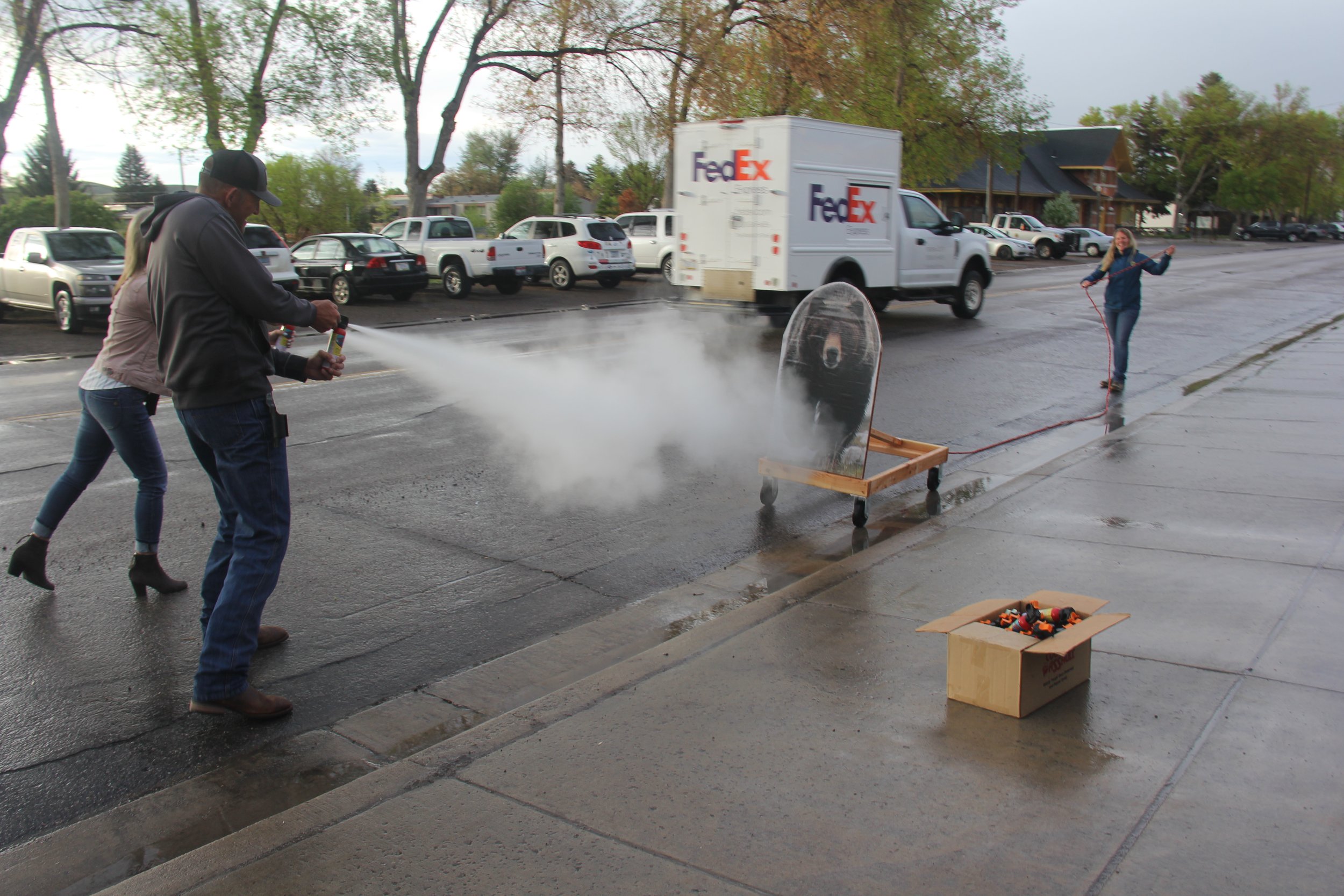
Bear Spray
When in Bear Country, carry bear spray and, most importantly, know how to and be ready to use it.
Keep bear spray accessible at all times, and practice pulling it out of your holster, removing the lock, and positioning it to spray properly so that it becomes second nature. Inert bear spray can be purchased and used to practice the motion and spraying of the material contained in bear spray cans.
Bear spray is a highly effective, easily used deterrent against aggressive bears and other animals. Purchase only bear spray that is clearly labeled as a bear deterrent.
Bear pepper spray should be used as a deterrent only in an aggressive or attacking confrontation with a bear. It should not be applied to people, tents, packs, other equipment or surrounding area as a repellent.
Many encounters with grizzlies happen very quickly. To give yourself a margin of safety, carry your bear spray in a consistent and accessible place on your person. If you see a bear, and it is not running away from you, get your bear spray ready.
To avoid encounters in the first place, pay attention to where you are. Can you see very far? Is there terrain or vegetation that could hide a bear from your view? Awareness of wind direction is also important. If the wind is in your face as you walk, that means your scent and sound is being carried away from a bear that may be ahead of you. In our experience, grizzlies that can catch your scent will typically leave once they know what you are.
Stay alert for fresh bear signs as well. Tracks may not always be obvious. And look for scat, rub trees, or fresh digging (excavating roots, insects, or rodents). Bears will often tear apart logs or flip rocks seeking food, too. A grizzly defending a food source can be very dangerous. Be alert Look and listen for scavenger birds like ravens and magpies. You may be able to smell a carcass from some distance. If you do detect a carcass, take a wide detour (staying at least 200 yards away) around it, or turn around if there is no option to detour.
Bears tend to be most active at dusk and dawn, but that doesn’t mean you can’t encounter one midday. Bears often sleep during the day in thick timber. Move carefully, and stop frequently to listen, when traveling through such places.
Situational awareness is a person’s most valuable tool, as it allows you to be as prepared as possible for a bear encounter. However, note that you can be prepared and follow all the instructions you’ve been told or read, and still have an encounter. Bear are wild animals that injure people, and we cannot remove risk 100%, but we can be aware of our surroundings and prevent most encounters before they happen.

